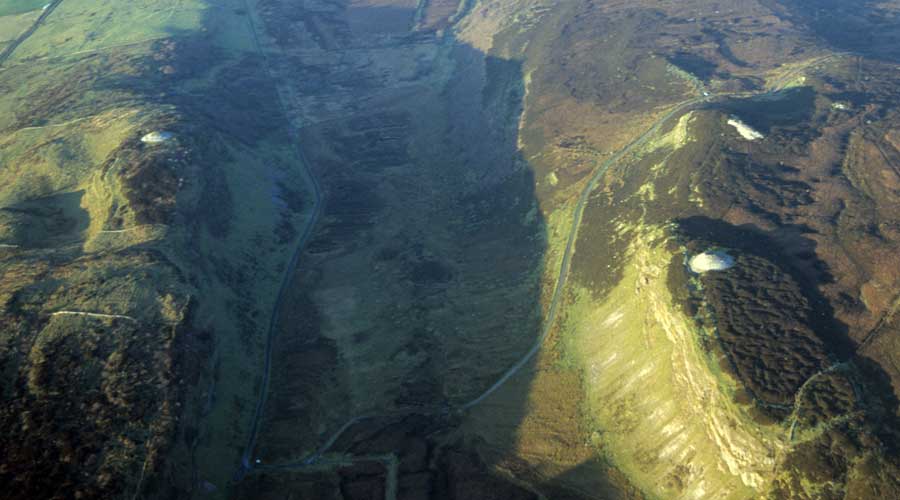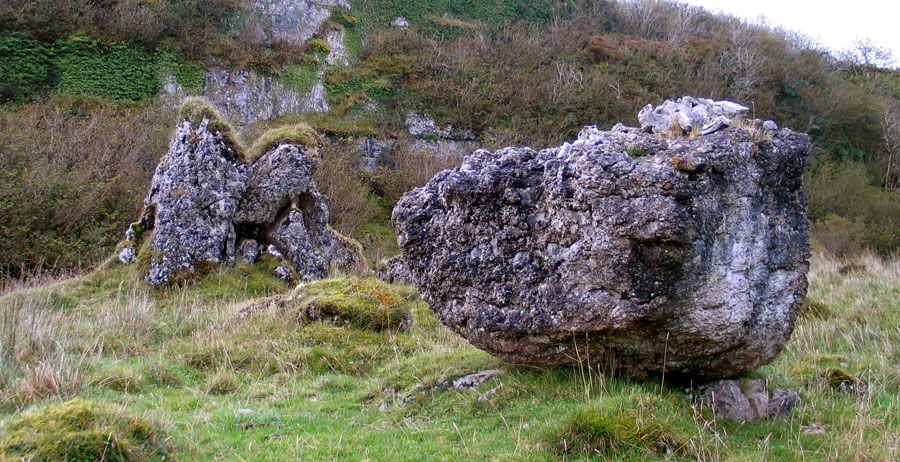


Looking
north in an aerial shot over the Bricklieves. On the left side of the
valley is Cairn B. To the right are Cairns E and F. |
|
The earliest antiquarian reports stated that Newgrange had a fallen pillar-stone in the chamber, although no evidence has come to light since. It may be that it was a dislodged section from a roof corbel. Cairn L at Loughcrew has a pillar in its chamber, known as the Whispering Stone or Speaking Stone, and it is likely that the chamber cairn were constructed around this special standing stone. The Loughcrew Whispering Stone is struck by a beam of light from the rising sun on the November and February cross-quarter days, a truly amazing sight to behold.
More sections and dimensions of Cairn F (not visible today) from 1911.
Looking north from the ruined chamber of Cairn F, across Cairn E. This makes this Cairn F one of a small group of Irish cairns concerned with the pole star. This northern position marker was used to measure the angle of the lunar standstill to Knocknarea from Cairns E & K and the summer solstice sunsets at Cairns E & G. Another possible function is to observe the pole star at noon during solar eclipses. |

The
stirring rock, a tumbled rocking stone, and 'the megalith', a dolmen:
two little known monuments in a valley south of Cairn F. |
